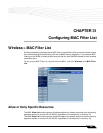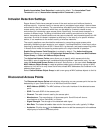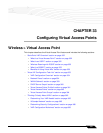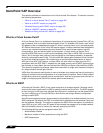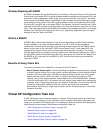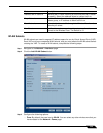
Wireless > Virtual Access Point
352
SonicOS Enhanced 4.0 Administrator Guide
SonicPoint VAP Overview
This section provides an introduction to the Virtual Access Point feature. This section contains
the following subsections:
• “What Is a Virtual Access Point?” section on page 352
• “What Is an SSID?” section on page 352
• “Wireless Roaming with ESSID” section on page 353
• “What Is a BSSID?” section on page 353
• “Benefits of Using Virtual APs” section on page 353
What Is a Virtual Access Point?
A Virtual Access Point is a multiplexed instantiation of a single physical Access Point (AP) so
that it presents itself as multiple discrete Access Points. To wireless LAN clients, each Virtual
AP appears to be an independent physical AP, when in actuality there is only a single physical
AP. Before the evolution of the Virtual AP feature support, wireless networks were relegated to
a one-to-one relationship between physical Access Points and wireless network security
characteristics, such as authentication and encryption. In other words, an Access Point
providing WPA-PSK security could not simultaneously offer Open or WPA-EAP connectivity to
clients, and if the latter were required, they would had to have been provided by a separate,
distinctly configured Access Points. This forced WLAN network administrators to find a solution
to scale their existing wireless LAN infrastructure to provide differentiated levels of service.
With the Virtual APs (VAP) feature, multiple VAPs can exist within a single physical AP in
compliance with the IEEE 802.11 standard for the media access control (MAC) protocol layer
that includes a unique Basic Service Set Identifier (BSSID) and Service Set Identified (SSID).
This allows for segmenting wireless network services within a single radio frequency footprint
of a single physical access point device.
VAPs allow the network administrator to control wireless user access and security settings by
setting up multiple custom configurations on a single physical interface. Each of these custom
configurations acts as a separate (virtual) access point, and can be grouped and enforced on
single or multiple physical SonicPoint access points simultaneously.
What Is an SSID?
A Service Set IDentifier (SSID) is the name assigned to a wireless network. Wireless clients
must use this same, case-sensitive SSID to communicate to the SonicPoint. The SSID consists
of a text string up to 32 bytes long. Multiple SonicPoints on a network can use the same SSIDs.
You can configure up to 8 unique SSIDs on SonicPoints and assign different configuration
settings to each SSID.
SonicPoints broadcast a beacon (announcements of availability of a wireless network) for every
SSID configured. By default, the SSID is included within the beacon so that wireless clients can
see the wireless networks. The option to suppress the SSID within the beacon is provided on
a per-SSID (e.g. per-VAP or per-AP) basis to help conceal the presence of a wireless network,
while still allowing clients to connect by manually specifying the SSID.
The following settings can be assigned to each VAP:
• Authentication method
• Maximum number of client associations using the SSID
• SSID Suppression




